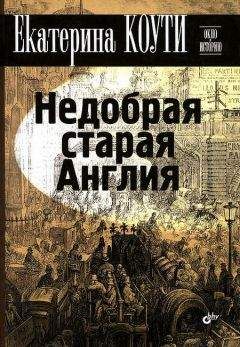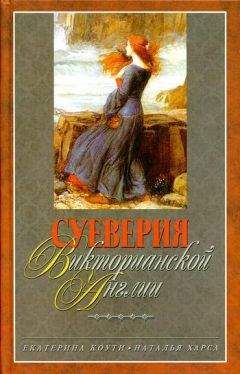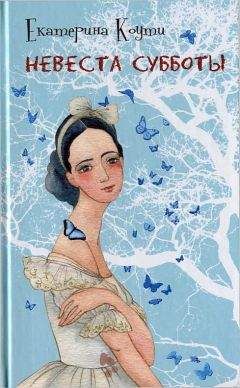Оскар Уайльд тоже чувствовал приближение смерти. «Англичане не вынесут, если начнется новое столетие, а я буду еще жив», — говорил он. В ноябре 1900 года он будет умирать от менингита, а Робби Росс, самый преданный его друг, оставшийся с ним до самого конца, приведет католического священника, чтобы тот окрестил и соборовал умирающего. 30 ноября 1900 года Оскара Уайльда не станет. А вскоре канет в прошлое и та эпоха, которая сначала вознесла его на пьедестал, а потом заклеймила.
Источники на английском языке
Abbott, Geoffrey. Execution: the guillotine, the pendulum, the thousand cuts, the Spanish donkey, and 66 other ways of putting someone to death. New York: St. Martin’s Press, 2006.
Abbott, Geoffrey. The executioner always chops twice: ghastly blunders on the scaffold. New York: St. Martin’s Press, 2004.
Ackroyd, Peter. London: the biography. London Chatto & Windus, 2000.
Acton, William. Prostitution considered in its moral, social and sanitary aspects, in London and other large cities and garrison towns: with proposals for the control and prevention of its attendant evils. London: John Churchill and Sons, 1870. [39]
Allaby, Michael. Fog, smog, and poisoned rain. New York: Facts On File, 2003. [6]
Anstruther, Ian. The scandal of the Andover Workhouse. London: Bles, 1973.
Begg, Paul. Jack the Ripper: the definitive history. London: Longman, 2003.
Blindage, Anthony. The English poor laws, 1700–1930. New York: Palgrave, 2002.
Bronte Anne. The tenant of Wildfell Hall and Agnes Grey. New York: Norton, 1954.
Bronte Charlotte. Jane Eyre. New York: Random House, 1943.
Broomfield, Andrea. Food and cooking in Victorian England: a history. Westport, Conn.: Praeger Publishers, 2007.
Burford, E. J. Of bridles and burnings: the punishment of women. New York: St. Martin’s Press, 1992. [36]
Burnett, John. Plenty and want: a social history of food in England from 1815 to the present day. London: Routledge, 1989.
Carpenter, William. Hone, William. A political pilot. 26 марта, 1831. [37]
Cassell’s Household Guide: being a complete encyclopaedia of domestic and social economy and forming a guide to every department of practical life. London: Cassell, Petter and Galpin, 1869–1871.
Cleland, John. Memoirs of Fanny Hill. New York: New American Library, 1965.
Cocks, H. G. Nameless offences: speaking of male homosexual desire in nineteenth-century England. London; New York: I. B. Tauris, 2003. [47]
Cohen, William A. Filth: dirt, disgust, and modern life. Minneapolis: University of Minnesota Press, 2005.
Crompton, Frank. Workhouse children. Thrupp, Stroud, Gloucestershire: Sutton, 1997.
Dawes, Frank. Not in front of the servants: a true portrait of English upstairs/downstairs life. New York: Taplinger, 1974.
Fido, Martin. Oscar Wilde. New York: Viking Press, 1973.
Fisher, Trevor. Scandal: the sexual politics of late Victorian Britain. Stroud: A. Sutton, 1995.
Flanders, Judith. Inside the Victorian home: a portrait of domestic life in Victorian England. New York: W. W. Norton, 2004. [12]
Foldy, Michael. The trials of Oscar Wilde: deviance, morality, and late-Victorian society. New Haven: Yale University Press, 1997. [51]
Gaskell, Elizabeth Cleghom. The life of Charlotte Bronte. Edinburgh: J. Grant, 1924.
Gibson, Ian. The English vice: beating, sex, and shame in Victorian England and after. London: Duckworth, 1978.
Gordon, Michael. The Thames torso murders of Victorian London. Jefferson: McFarland Publishers, 2002.
Grant, James. Sketches in London. London: W. S. Orr & Co., 1838. [3] [27]
Greenwood, James. The seven curses of London. London: S. Rivers, 1870.
Halliday, Stephen. The great filth: disease, death and the Victorian city. Stroud: History Press, 2011.
Hammerton A. J. Cruelty and companionship: conflict in nineteenth-century married life. London, New York: Routledge, 1992.
Harrison, John. Late Victorian Britain, 1875–1901. London; New York: Routledge, 1991.
Hickman, Katie. Courtesans: money, sex, and fame in the nineteenth century. New York: Morrow, 2003.
Hoff, Joan. Yeates, Marian. The cooper’s wife is missing: the trials of Bridget Cleary, New York: Basic Books, 2000.
Honeycombe, Gordon. The murders of the Black Museum, 1870–1970. London: Hutchinson, 1982.
Hughes, Kristine. The writer’s guide to everyday life in Regency and Victorian England, from 1811–1901. Cincinnati: Writer’s Digest Books, 1998.
Hyde, Montgomery. Oscar Wilde: a biography. New York: Farrar, Straus, and Giroux, 1975.
Jackson, Lee. A dictionary of Victorian London: an A-Z of the great metropolis. London; New York: Anthem Press, 2006. [7] [10]
Jackson, Louise. Child sexual abuse in Victorian England. London: Routledge, 1999.
Kaplan, Morris. Sodom on the Thames: sex, love, and scandal in Wilde times. Ithaca: Cornell University Press, 2005.
Kenyon, Karen Smith. The Bronte family: passionate literary geniuses. Minneapolis: Lemer Publications Co., 2003.
Koven, Seth. Slumming: sexual and social politics in Victorian London. Princeton: Princeton University Press, 2004.
Krafft-Ebing, R. von. Psychopatia sexualis, with especial reference to the antipathic sexual instinct; a medico-forensic study. London: Staples Press, 1965.
LeFanu, Joseph Sheridan. Best ghost stories of J. S. LeFanu. New York: Dover Publications, 1964.
Lutz, Debora. Pleasure bound: Victorian sex rebels and the New Eroticism. New York: W. W. Norton & Company, 2011. [43]
May, Trevor. The Victorian domestic servant. Princes Risborough: Shire, 1998.
Mayhew, Henry. London labour and the London poor. London: Griffin, Bohn, and Company, 1861–62. [19] [21] [24] [26] [28] [34]
Mayhew, Henry. The criminal prisons of London and scenes of prison life. London: Griffin, Bohn, 1862. [38]
Mason, Michael. The making of Victorian sexuality. Oxford; New York: Oxford University Press, 1994.
McClintock, Anne. Imperial leather: race, gender and sexuality in the colonial contest. New York: Routledge, 1995. [18] [45] [46]
McKenzie, Andrea. Tyburn’s martyrs: execution in England, 1675–1775. London: Hambledon Continuum, 2007.
Mitchell, Sally. Daily life in Victorian England. Westport: Greenwood Press, 1996.
Perkin, Joan. Victorian women. London: J. Murray, 1993.
Picard, Liza. Victorian London: the life of a city, 1840–1870. New York: St. Martin’s Press, 2006.
Punch: the London charivari. London: Punch Publ., 1841–1901. [15]
Raw, Louise. Striking a light: the Bryant and May Matchwomen and their place in history. London; New York: Continuum, 2011.
Robb, Graham. Strangers: homosexual love in the nineteenth century. New York: W. W. Norton, 2004.
Rosner, Liza. The anatomy murders. Philadelphia: University of Pennsylvania Press, 2010.
Rowe, Richard. Life in the London streets: or, struggles for daily bread. London: J. C. Nimmo and Bain, 1881.
Sacher-Masoch, Leopold. Venus in furs. New York: Penguin Books, 2000.
Schneer, Jonathan. The Thames. New Haven: Yale University Press, 2005. [9]
Seaman, L. C. Life in Victorian London. London: Batsford, 1973.
Simpson, Colin. The Cleveland street affair. Boston: Little, Brown, 1976. [48] [49] [50]
Smith, Albert. Sketches of London life and character. London: Dean and sons, 1859.
Smith, Charles Manley. A treatise on the law of master and servant: including therein masters and workmen in every description of trade and occupation: with an appendix of statutes. London: S. Sweet, 1852. [16]
Speaight, George. Punch and Judy. Boston: Plays, Inc., 1970.
Spencer, Colin. British food: an extraordinary thousand years of history. New York: Columbia University Press, 2003. [11]
Stead, William. The Maiden Tribute of Modem Babylon: the report of the Secret Commission. Lambertville: The True Bill Press, 2007. [41] [42]
Stewart, John. Stable economy: a treatise on the management of horses in relation to stabling, grooming, feeding, watering and working. London: Blackwood, 1860.
Tannahill, Reay. Sex in history. New York: Stein and Day, 1980.
The servants’ guide and family manual. London: J. Limbard, 1831. [17]
Thomas, Donald. The Victorian underworld. New York: New York University Press, 1998.
Thomson, J. Smith, A. Street life in London. London: Sampson Low, Marston, Searle and Rivigton, 1877.
Treble, James. Urban poverty in Britain, 1830–1914. New York: St. Martin’s Press, 1979.
Walkowitz, Judith. City of dreadful delight: narratives of sexual danger in late-Victorian London. Chicago: University of Chicago Press, 1992.
Walkowitz, Judith. Prostitution and Victorian society: women, class, and the state. Cambridge; New York: Cambridge University Press, 1980.
White, Jerry. London in the nineteenth century. London: Jonathan Cape, 2007.
Wise, Sarah. The blackest streets: the life and death of a Victorian slum. London: Bodley Head, 2008.
Wohl, Anthony. Endangered lives. Cambridge, Mass.: Harvard University Press, 1983.
Источники на русском языке
Блейк У. Избранное / Пер. С. Маршака. — М.: Художественная литература, 1969. [40]
Гаскел Э. Север и Юг / Пер. В. Григорьевой и Е. Первушиной. — СПб.: Азбука, 2011. [30] [31]
Дефо Д. Радости и горести знаменитой Молль Флендерс / Пер. А. Франковский. — М.: Художественная литература, 1991. [33]
Диккенс Ч. Наш общий друг. Собрание сочинений в тридцати томах. Т. XXIV / Пер. В. Топер. — М.: Художественная литература, 1962. [20]
Диккенс Ч. Очерки Боза. Собрание сочинений в тридцати томах. Т. I / Пер. М. Лорие и В. Топер. — М.: Художественная литература, 1957. [1]
Диккенс Ч. Посмертные записки Пиквикского клуба / Пер. А. В. Кривцовой и Евгения Ланна. — М.: Художественная литература, 1984. [13]
Диккенс Ч. Приключения Оливера Твиста / Пер. А. Кривцовой. — М.: Художественная литература, 1976. [2] [4] [29] [32]
Диккенс Ч. Холодный дом. Собрание сочинений в тридцати томах. Т. XVII / Пер. М. Клягиной-Кондратьевой. — М.: Художественная литература, 1960. [5] [22] [23]
Кристи А. Автобиография / Пер. В. Чемберджи и И. Дорониной. — М.: Эксмо, 2007. [8]
Лэм Ч. Очерки Элии / Пер. А. С. Бобовича и Н. Я. Дьяконовой. — М.: Наука, 1979. [14]
Твен М. Принц и нищий. Янки из Коннектикута при дворе короля Артура / Пер. К. Чуковского и Н. Чуковского. — М.: Эксмо, 2009. [25]
Толстой Л. Анна Каренина. — М.: ACT, 2008. [44]
Уайльд О. «Баллада Рэдингской тюрьмы». Избранные произведения в двух томах. Том И. — М.: Республика, 1993. [53]
Уайльд О. Портрет Дориана Грея. Сказки. — М.: ACT, 2008. Уайльд О. Письма / Пер. Л. Мотылев. — М.: Азбука-Классика, 2010. [52]
Фуко М. Надзирать и наказывать: рождение тюрьмы / Пер. В. Наумов. — М.: Ad Marginem, 1999. [35]
Чернов С. Бейкер-стрит и окрестности. — М.: Форум, 2007.
Источники иллюстраций
Andrews, William. Bygone punishments. London: W. Andrews & со., 1899.
Brooks, Shirley. The Gordian knot: a story of good and of evil. With illustrations by John Tenniel. London: R. Bentley, 1860.
Cassell’s Household Guide: being a complete encyclopaedia of domestic and social economy and forming a guide to every department of practical life. London: Cassell, Petter and Galpin, 1869–1871.
Dore, Gustave. London, a pilgrimage. London: Grant & Co., 1872.
Mayhew, Henry. London labour and the London poor. London: Griffin, Bohn, and Company, 1861–62.
Mayhew, Henry. The criminal prisons of London and scenes of prison life. London: Griffin, Bohn, 1862.
Punch: the London charivari. London: Punch Publ., 1841–1901.
Sikes, Wirt. British goblins. Boston: J. R. Osgood and company, 1881.
Stuart J. A. The Bronte country. London: Longmans, Green, 1888.
The cyclopedia of wit and humour. New York, London: D. Appleton and company, 1864.
The English illustrated magazine. London; New York: Macmillan & Co., 1881–1892.
The illustrated London news. London: William Little, 1888.
The illustrated police news. London: George Purkess, 1870, 1895.
World noted women celebrated in history, poetry, and romance for beauty, character, and heroism. New York: D. Appleton, 1881.
В викторианскую эпоху в ходу были монеты с разным достоинством: полфартинга, фартинг (1/4 пенни), полпенни, пенни, двухпенсовик, трехпенсовик, четырехпенсовик, шестипенсовик, шиллинг (12 пенсов), флорин (2 шиллинга), полкроны (2,5 шиллинга), крона (5 шиллингов), полсоверена (10 шиллингов), соверен (20 шиллингов). 21 шиллинг равнялся одной гинее.
Приход — низший административный округ с системой самоуправления.
Тем не менее, глагол to crap — «испражняться» — появился гораздо раньше и никак не связан с изобретателем. Вероятнее всего, его фамилия происходит от слова cropper — старинное обозначение фермера.





